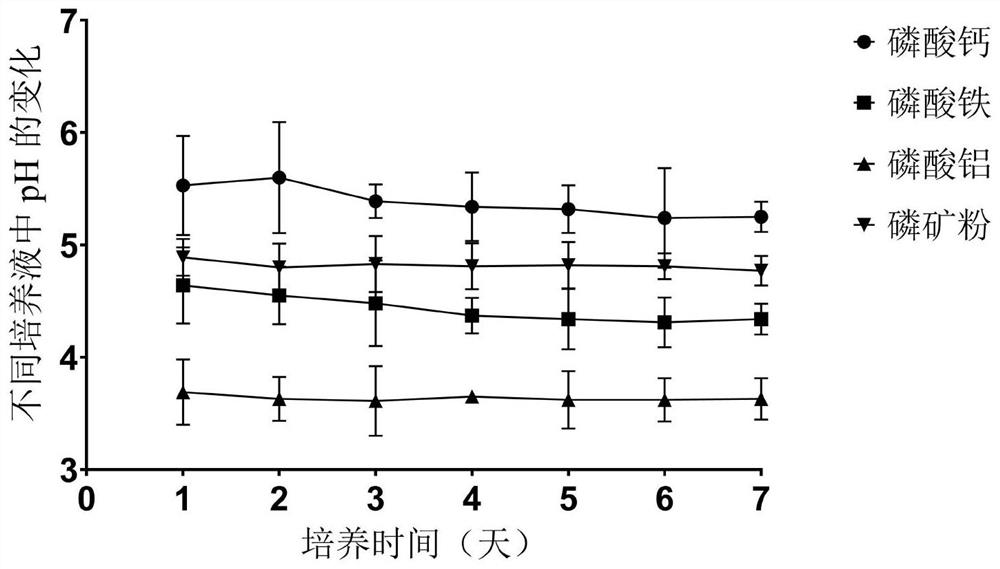Sphingobacterium multivorium and application thereof
A technology of Sphingobacterium and strains, applied in the field of microorganisms, can solve the problem of low solubility of insoluble phosphates
- Summary
- Abstract
- Description
- Claims
- Application Information
AI Technical Summary
Problems solved by technology
Method used
Image
Examples
Embodiment 1
[0023] The screening of embodiment 1 phosphate-dissolving bacteria
[0024] Reyan No. 2 Stylosanthes guianensis cv.Reyan No.2 in the vegetative stage was selected, dried and sieved (2mm) as a green manure sample, the experimental base of the Institute of Tropical Crops Variety Resources, Chinese Academy of Tropical Agricultural Sciences, Danzhou City, Hainan Province The brick red soil is the soil sample. The indoor soil column culture method is adopted. One end of the wax cylinder is sealed with two layers of filter paper. The soil to be tested is evenly added to the wax cylinder, and the soil column absorbs water evenly to the saturated water holding capacity by capillary action. Finally, seal the whole wax cylinder with plastic wrap, and place it vertically in the incubator to avoid light and balance for 48 hours. After the soil column is balanced, the phosphate fertilizer or green manure is mixed evenly and placed in a nylon bag, placed on the top of the soil column, seale...
Embodiment 2
[0025] The identification of embodiment 2 phosphate-solubilizing bacteria strains
[0026] Purified and cultivated strains were selected and sequenced by 16S rDNA. The sequence obtained by sequencing was compared in NCBI, and the sequence with the highest similarity was selected as the species identification result. The similarity between the sequence and the 16S rDNA gene sequence of Sphingobacterium multivorum is as high as 99%.
Embodiment 3
[0027] The ability of embodiment 3 phosphate-solubilizing bacteria to dissolve insoluble phosphate
[0028] Into the PKO liquid medium with calcium phosphate, iron phosphate, aluminum phosphate, and phosphate rock powder as the phosphorus source, insert the bacterial solution (OD600 is 0.5) made by the same amount of strains, and place it on a constant temperature shaker (160r / min, 28°C) for 7 days, centrifuge the culture solution at 4°C (10000r / min) for 15min, take the supernatant and use the molybdenum antimony anti-colorimetric method to measure its effective phosphorus content, and at the same time, no bacterial suspension was used as a control. 3 repetitions. The measured available phosphorus content is as follows:
[0029] Available phosphorus content of Sphingobacterium multivorum p6 in four phosphorus source culture solutions (μg mL -1 )
[0030]
[0031] The formula for calculating the amount of dissolved phosphorus is:
[0032] Calculation formula: P=(K-K ck ...
PUM
 Login to View More
Login to View More Abstract
Description
Claims
Application Information
 Login to View More
Login to View More - R&D
- Intellectual Property
- Life Sciences
- Materials
- Tech Scout
- Unparalleled Data Quality
- Higher Quality Content
- 60% Fewer Hallucinations
Browse by: Latest US Patents, China's latest patents, Technical Efficacy Thesaurus, Application Domain, Technology Topic, Popular Technical Reports.
© 2025 PatSnap. All rights reserved.Legal|Privacy policy|Modern Slavery Act Transparency Statement|Sitemap|About US| Contact US: help@patsnap.com



